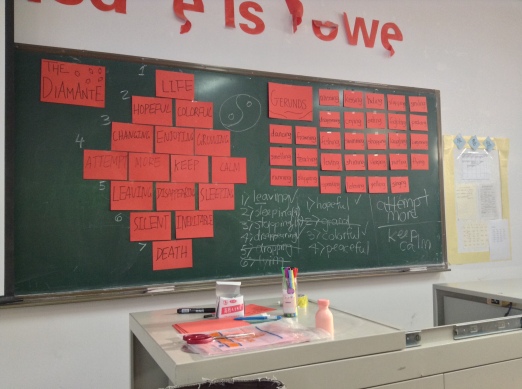
My week is coming to an end, but I can’t relax and bake just yet. Research papers need to be edited, a writing class needs to be taught, and a conference call needs to be had. I’ve picked up a habit from my mother that she picked up from her father that he picked up from his mother…. cleanliness and order. I CANNOT focus and get work down when my eyes land on a stack of unorganized paper or on a pile of folded clothes that need to be put away. So, after my class this morning, I turned on Spotify’s #ThrowbackThursday playlist and began sorting old papers and students’ work. Sorting is never easy for me because I always want to keep everything even if I know I will probably never look at it again. However, living in a relatively small space does not afford you the luxury of hoarding.
Now, to the point of this ramble. As I was sorting and trashing papers against my better judgement, I found some of my students’ work from a gallery walk activity we did in our Oral English class. Discussing the Summer Olympics led us to exploring the deeper meanings of different types of symbols and the concept of nationalism. We focused our attention on the symbols of Southeast Asian nations, such as Myanmar’s new flag and the Philippine’s coat of arms. To check for understanding and to give my students a progress check, I asked students to get in groups or pairs with classmates from their hometowns. Their task was to design a symbol that best represented their hometown. I gave my students a blank sheet of paper and a lot of freedom in choosing a symbol (songs, flags, emblems, objects, animals, etc.) for the hometowns. Some groups created flags, some drew pictures, and some wrote songs! There were those who provided words and those who let their work speak for itself.Read More »












